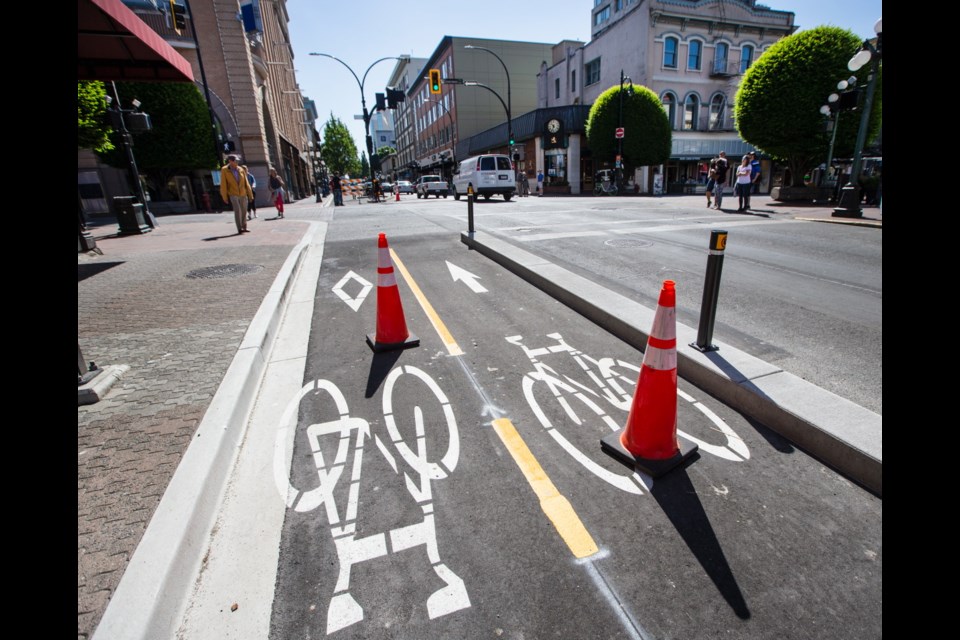With the paint still drying on the new Fort Street bike lanes, Victoria council unanimously gave the green light Thursday to tender the next legs of the protected cycling network.
The Wharf and Humboldt lanes will link to those on Pandora Avenue and Fort Street and connect to the Johnson Street Bridge bike crossing and Galloping Goose Regional Trail.
Councillors also approved putting plans to build protected cycling lanes on Cook Street on hold in favour of accelerating consultation and a design using Vancouver Street as a north-south cycling link between Beacon Hill Park and Bay Street.
Staff are to report back on options for reducing vehicle traffic on Vancouver between Fort and Southgate to 1,000 vehicles a day from 5,100.
The city’s multimillion-dollar bike network began with a two-way bike lane on Pandora Avenue, which opened in April 2017 at a cost of $3.4 million.
The next portion, a $3.27-million lane on Fort Street, is due to open Sunday.
The network, intended to improve cyclist safety and encourage people of all ages and abilities to cycle, has been a hot-button issue in the city.
Shopkeepers and restaurateurs on Pandora Avenue and Fort Street say business plummeted during construction, while some motorists have griped about the loss of parking spots, the confusion generated by having two-way bike lanes on one-way streets and a feeling that cyclists are being given preferential treatment.
While several councillors worried Thursday that the city might be moving too fast on the network and could benefit from pausing to see how the new lanes are working out, they agreed with director of engineering Fraser Work, who framed the overall project as being about safety.
“This is not a project that aims to make it more convenient or comfortable for a small group of cyclists,” Work said. “This is a program to make it safe to cycle in the city. Full stop.”
Work noted that public discussion often lands on how painted cycle lanes should be adequate and would be cheaper. But, he said, that misses the mark.
“We don’t paint sidewalks in the downtown,” he said.
“We separate them by elevated curb and boulevards, away from moving traffic, and that, everyone agrees, is the right thing to do, because everyone is a pedestrian. Not everyone is a cyclist.”
Work said improving the pedestrian experience has been a high priority as the city has pushed ahead with the first two legs of the cycling network.
City staff are recommending a combination of separated bike lanes and a “shared streets” approach in the next stretch of the project.
Staff estimate 21 of 45 on-street stalls on Wharf Street between Pandora Avenue and Government Street will have to be eliminated to make way for a two-way protected bike lane on the west side of Wharf.
The intersection of Wharf, Government and Humboldt streets would be reconfigured, transforming it into a traditional, right-angle junction. The two-way protected lane would continue on the south side of Humboldt to Douglas Street.
East of Douglas, Humboldt would be blocked to motor traffic, essentially turning it into a cul-de-sac.
A “shared road treatment” using a combination of paint markings, traffic calming and traffic diversion would be used instead of separated bike lanes between Douglas and Vancouver streets and on Pakington Street between Vancouver and Cook streets.



